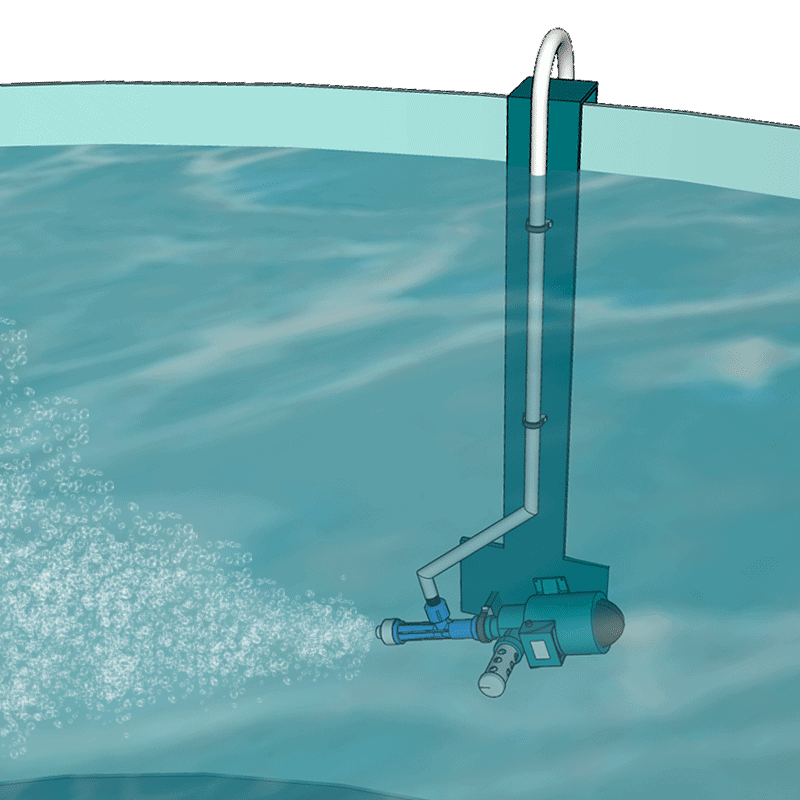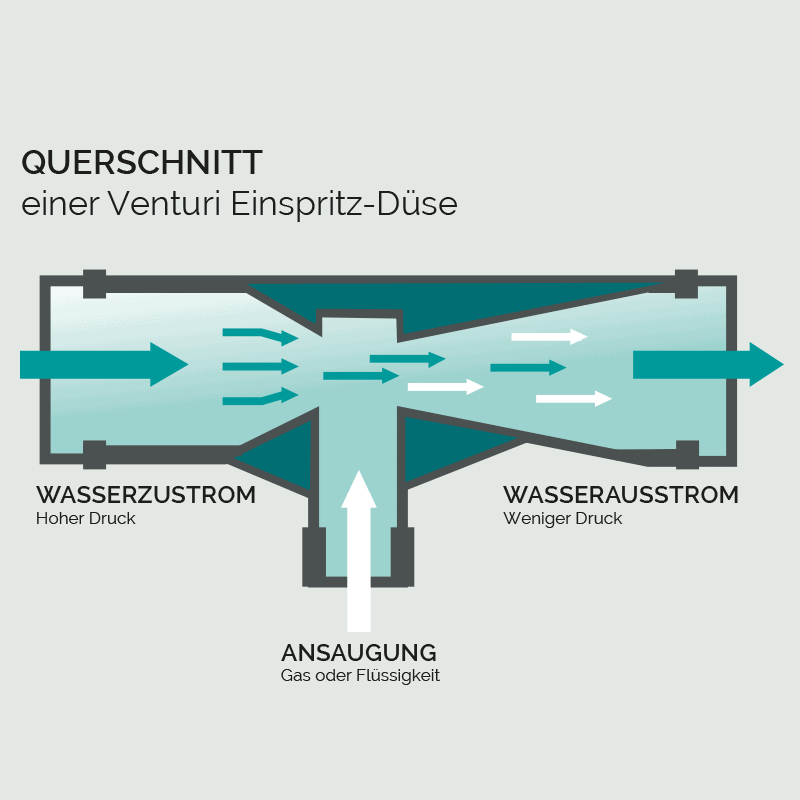Cost-effective oxygen introduction
Learn more about the topics of drift and oxygen in a personal conversation.
Flow Pump
In fish farming the supply of sufficient oxygen to the stocks plays an important role. This has many positive effects on the stocks and profitability of an aquaculture facility. With our flow pump, oxygen-rich ambient air and optionally technical oxygen can be introduced very efficiently into the water by using the Venturi effect. In addition, our flow pump generates a targeted movement of the water in the tank. The oxygen is introduced as needed to promote the health, growth and well-being of the animals and prevent stress, especially in times of higher oxygen consumption such as during feeding. At the same time the targeted current supports the swimming behavior of the animals and facilitates the particle transport to the filters by constant water movement.
The required number of flow pumps depends on the pool size, the stocking density and the associated daily feed input. From this it can be determined how much oxygen is required in the system. Our standard product is suitable for the fine-bubble introduction of oxygen into tanks with a water volume of up to 15 m³ and a feed load of 7.5 kg per day (assuming a suitable source of oxygen is available). We would also be pleased to work out a tailor-made concept for you.

Venturi effect
In order to achieve a very efficient introduction of air and/or oxygen into the water, we use a Venturi nozzle. The water is first pumped into the nozzle. A constriction inside the nozzle changes the pressure conditions and the water flow accelerates. This creates a negative pressure which can be used to suck in a medium through a separate opening in the nozzle. In the case of our Venturi injector, this is either ambient air with the oxygen it contains or technical oxygen. The gas sucked in is distributed particularly finely in the water stream when it is blown out. Due to the high outlet velocity of the water, the transported gas bubbles transported travel a long distance in the water. This gives the oxygen sufficient time to dissolve completely in the water and to be available to the fish. Flow pumps with Venturi nozzles are one of the best methods of introducing oxygen into an aquarium at low cost.
Drift
Sufficient movement of water in an aquaculture facility is very important for two reasons. On the one hand the movement supports the swimming behaviour of the fish. On the other hand, in (partially) closed aquaculture systems, the particles that are introduced by the feed or excrements of the animals, for example, must be constantly removed from the water. Mechanical sieve filters such as the drum filter are usually used for this purpose. In order for this filter to be able to remove the particles, they must not sediment beforehand and settle on the bottom of the pool. The particles must therefore be kept in suspension by movement in the water and thus transported to the corresponding filters. This visibly improves the water quality.

Oxygen introduction needed?
We would be glad to send you further information about our flow pump.
